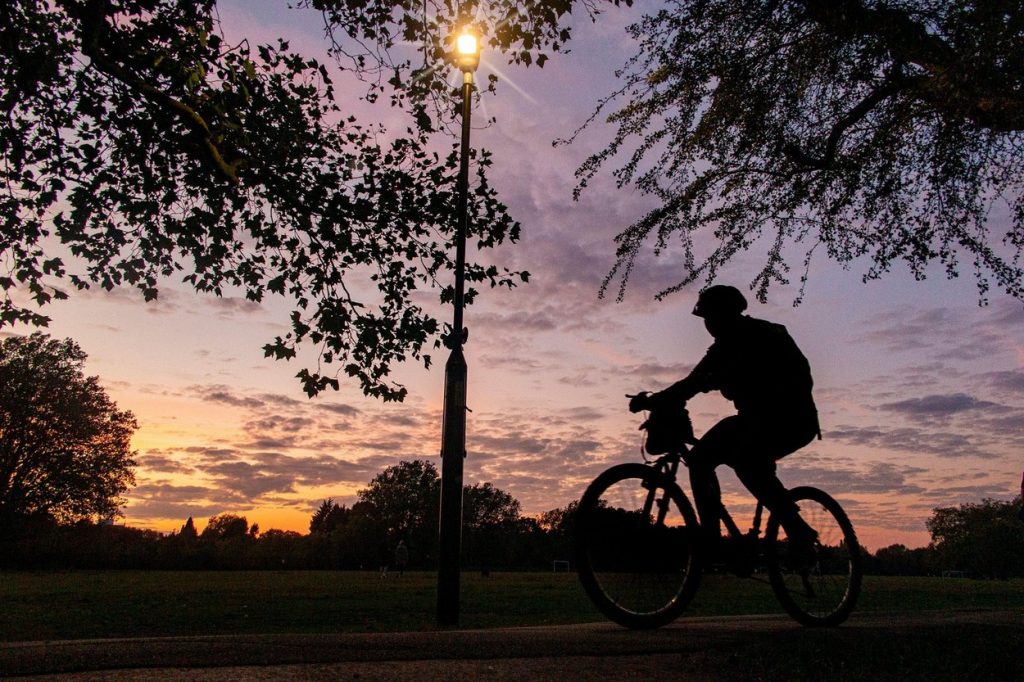The days are getting shorter and the reality of winter riding is just around the corner. Along with the need for warmer layers and winter tyres, tis the season when many riders realise they need to enhance their visibility with quality front and rear lights. There are lots of different bike lights available. Each is suited for different needs and hit various price points. Depending on factors like riding conditions, where and what you are riding, plus the duration of the ride, some lights are better than others. Let’s break down some bike light FAQs to help you pick the best lights for your needs and budget.
Lights to help you see vs be seen. What’s the difference?
The first question you need to ask yourself before you start shopping for best bike lights is whether they’re intended to help you see while cycling, or to be seen by others. What’s the difference? Cycle lights used to see with, on unlit roads for example, rank higher on the brightness scale, have a larger battery life, and a narrower beam angle to see down the road ahead.
Conversely, lights used to be seen on urban streets are designed to attract the attention of other traffic from all angles, including the sides, and have a broad pattern. The number of lumens (see below) associated with be seen bike lights tend to be lower, as the priority isn’t to see far into the distance. As a result, be seen lights are often lighter, have smaller batteries, fewer lumens, modest wide beam angles and cost less than bike lights that are intended to help you see your way.

What’s a lumen, lux, and beam angle anyway?
You don’t need to a degree in physics to pick the right bike lights. However, it does help to understand a few basic terms and principles to explain what goes into the price. Here are a few you’re likely to see used to describe bike lights:
• Lumen: A measure of the total quantity of visible light emitted by a source per unit of time, the number of lumens attached to a bike light represents the total amount of light emitted.
• Lux: Refers to the brightness or intensity of the light emitted on an area or surface. The lux tells you how far the light will reach. If you think about lumens as representing the total amount of illumination emitted by a bike light, lux measures the amount of that light that gets transferred onto a surface a specific distance away. So, assuming that the number of lumens in a light remains constant, the larger the surface area, the less lux.
• Beam angle: It tells you how much the light spreads from the original source. An intense ray of light will have all its focus directly ahead while a broader one spreads further out and creates what is often referred to as a “bundle” of light. A wider bundle equals a larger beam angle and a greater light disbursement.
• Beam Type / Setting: Super, High, Full, Standard, Regular, Low, Flash, and Pulse are a few examples of light modes that you’re likely to run into. Five modes are standard. Each brand uses their own specific terminology but they all mostly line up with the types listed above.
Keep in mind that ever light mode will result in different energy consumption and burn time (how long a light takes to go from full charge to flat). A light may be sold as having a burn time of five hours but that is only when it is on Flash as opposed to Full. It’s a good idea to do your research because you want to make sure you have lights that can operate for the length of time you need for your ride.
https://www.instagram.com/p/BkfsFKZhiNl/?utm_source=ig_web_copy_link
Where should I put my bicycle lights?
With the more technical stuff out of the way, it is time to look at the practical matter of where the lights should go to be the most effective. In general, rear bike lights emit red, and front lights, white, just like cars. Following this pattern, a red, rear-facing light should be on your bike’s seat post and a white, front light on your handlebars. Flashing mode is one of the most successful at catching the attention of others, especially in low light.
Many saddlebags, backpacks, pannier bags and racks have a built in bike light mounts to attach any additional rear lights. Take advantage of this feature and add another flasher for maximum visibility. And how about your helmet? This is another great location for greater visibility. When it comes to safety, the more lights the better.
How many do I need?
Regulations vary from place to place, but you’ll be off to a good start with the best bike lights for your safety if you respect the following:
• A prominent front light on the handlebar that beams white; solid for flashing.
• A rear light that emits a solid or a flashing red light, positioned between 35 cm and 150 cm from the ground.
• A red, rear reflector positioned between 23 cm and 90 cm from the ground.
• An amber reflector on each side of the pedal, so that it is visible from the front and rear of the bike.
Keep in mind this is the minimum you need to meet most local regulations, and you’d do well to add in a few extras to maximise your safety.
https://www.instagram.com/p/CGP7nTyFbId/?utm_source=ig_web_copy_link
Do I need to use lights in daylight?
Glad you asked! The answer is yes. Despite the misguided belief that most accidents occur at night; The truth is that eight out of ten cycling accidents occur while the sun is at its height. A recent study from Denmark concluded that the number one thing cyclists can do to keep themselves safe is to always use lights during daylight hours, even in the bright sunshine.
Is there such a thing as too much light?
According to most regulations – no. But there is a fine line between making yourself highly visible and creating a hazard by blinding other road users with your dazzling light display. Just as you wouldn’t cruise around town with your car’s bright headlights on, you don’t need to illuminate the night sky. The majority of lights have a variety of modes and battery life, so be sure to familiarise yourself with the setting and select lighting appropriate to your riding conditions.
Do different cycling disciplines require different lights?
Yes and no. You’ll see brands marketing lights for different disciplines, and they do differ slightly, but you probably don’t need to get a completely different set of lights just because you’ve decided to go riding off road. Commuter and road lights are designed to function well at higher speeds, throwing out a wide, bright, flat beam that can both light up your periphery and provide a spot light on the road directly ahead. If you’re focused on mountain biking, you’re probably going to want something brighter and powerful to help you spot hazards and points where you need to turn or brake. Although anything above 200 lumens is fine for most road-riding conditions, you might want upwards of 1000 if you’re going to be hitting some hairy trails.

Should I buy rechargeable lights?
Most of the bike lights you’ll find on the market today are conveniently outfitted with a USB port for recharging. This is super handy and means that you can charge up your bike lights with a power bank, on your computer while you work, or plug them into the wall the night before a ride. Rechargeable led bike lights are handy and better for the environment, so there’s really no reason to opt for anything else.
What else do I need to know?
For standard road cycling, you’re going to want something with a fairly broad light angle and a selection of light modes. Definitely look for pulse and false modes plus a few others. As previously mentioned, you probably don’t need anything super bright if you’re sticking to the road.
And the advantage of weaker lights is that they tend to be lightweight and have improved run times because the brightness isn’t too excessive. Water resistance is another feature you’ll want to have, as well as something that has a user-friendly strap made of a flexible material. This makes it easier to mount and remove it repeatedly from your bike.
How much should I expect to spend?
As with all things bike-related, there’s a wide range of products available at equally differing price points to match. Thinking about the environment you’ll be riding in and how often you’re going to use the lights will help you narrow down your choices. You’ll be able to get a reliable set of leds of good build quality to see for about 60£/€, whereas €20 should outfit you with adequate lights to be seen. Don’t forget to take your lights off anytime you park your bike! They have a tendency to wander off on their own if left unattended.




